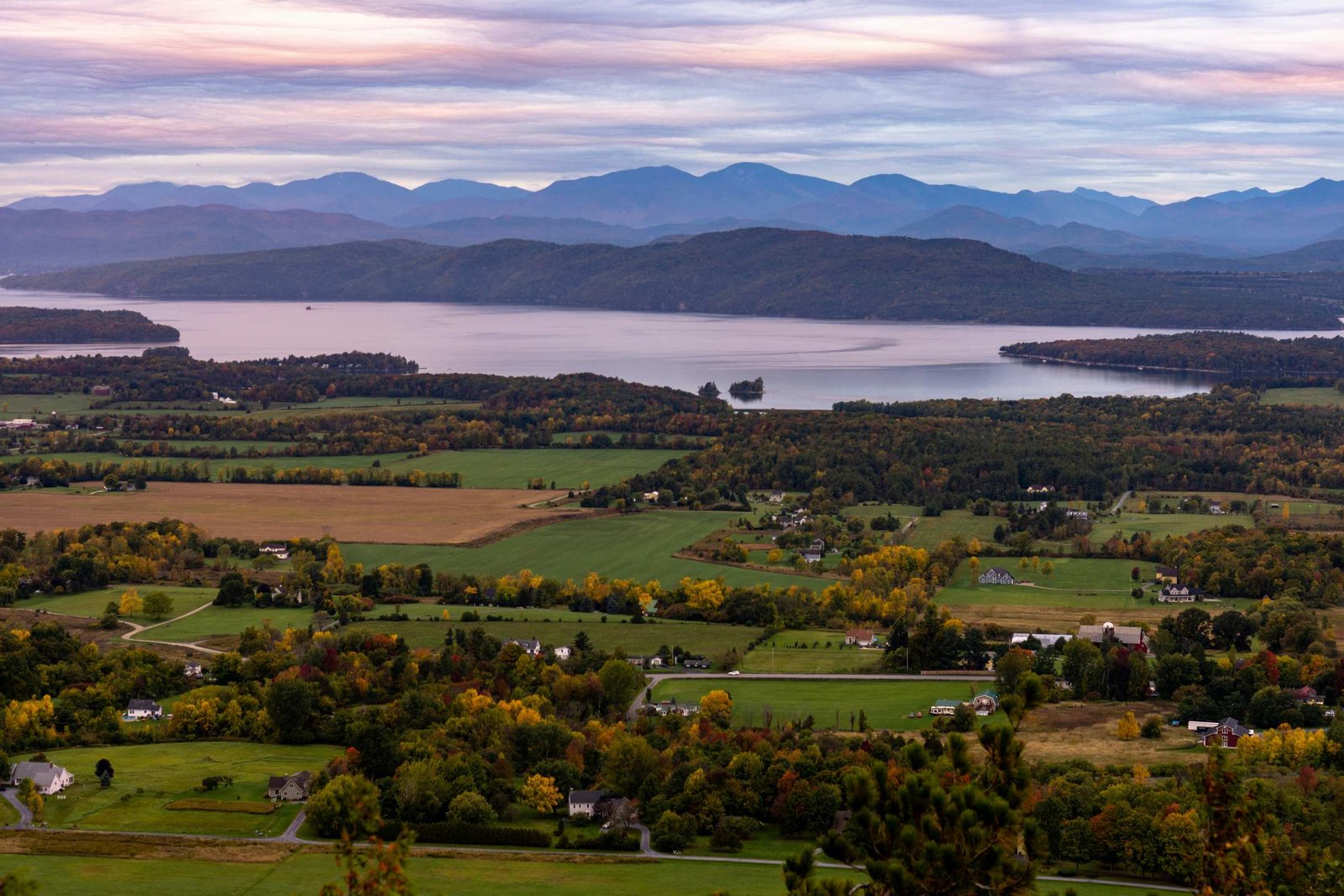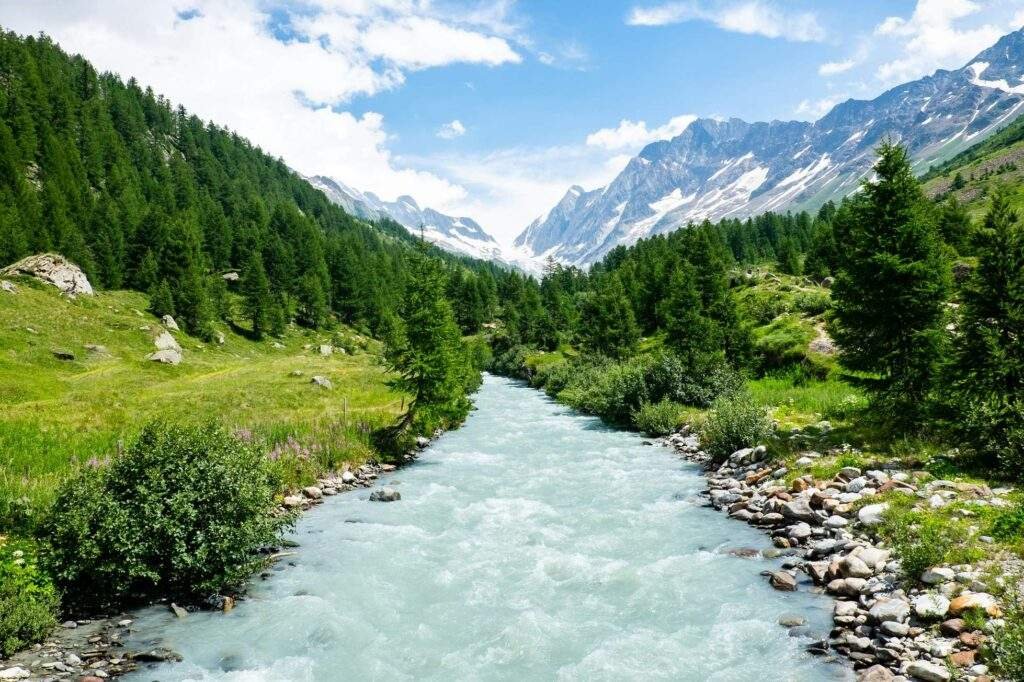Discover the 10 Best Hiking Trails in Vermont: Ultimate Guide
Introduction
Vermont, affectionately known as the Green Mountain State, is a hiker’s paradise. With its stunning landscapes, diverse ecosystems, and well-maintained trail systems, Vermont offers some of the best hiking trails in the northeastern United States. Whether you’re a seasoned trekker or a casual day-hiker, the best hiking trails in Vermont provide unforgettable experiences for outdoor enthusiasts of all levels. In this comprehensive guide, we’ll explore the top hiking destinations across the state, from challenging mountain ascents to leisurely nature walks. Get ready to lace up your boots and discover the natural wonders waiting for you on the best hiking trails in Vermont.
Table of Contents

The Long Trail: Vermont’s Iconic Hiking Experience
Overview and History
No discussion of the best hiking trails in Vermont would be complete without mentioning the Long Trail. Established in 1910, the Long Trail is the oldest long-distance hiking trail in the United States. Stretching 272 miles from the Massachusetts border to the Canadian border, this legendary path traverses the entire length of Vermont, following the main ridge of the Green Mountains.
Notable Sections and Highlights
While hiking the entire Long Trail is a significant undertaking, many of the best hiking trails in Vermont can be found along its route. Some notable sections include:
- Mount Mansfield: The highest peak in Vermont offers challenging terrain and breathtaking views.
- Camel’s Hump: A distinctive mountain with a bare, rocky summit and panoramic vistas.
- Stratton Mountain: Home to a historic fire tower and sweeping views of southern Vermont.
- Jay Peak: Known for its rugged beauty and expansive views into Canada.
Tips for Hiking the Long Trail
- Plan carefully: Whether you’re doing a day hike or a longer trek, proper planning is essential.
- Be prepared: Vermont’s weather can be unpredictable, so pack appropriate gear and clothing.
- Leave No Trace: Practice responsible hiking to preserve the trail for future generations.
Appalachian Trail Segments: World-Class Hiking in Vermont
Vermont’s Portion of the AT
The Appalachian Trail (AT) coincides with the Long Trail for about 100 miles in southern Vermont, offering some of the best hiking trails in Vermont along its route. This section provides hikers with a taste of the famous AT experience without committing to the full 2,190-mile journey.
Must-Visit Spots Along the Vermont AT
- Glastenbury Mountain: A remote and wild area with a rich history and stunning views.
- Killington Peak: Vermont’s second-highest mountain, offering challenging hiking and scenic beauty.
- Thundering Falls: A wheelchair-accessible boardwalk leads to a spectacular 140-foot waterfall.
Shelters and Camping Along the Trail
The AT in Vermont features numerous shelters and campsites, making it ideal for multi-day hikes. Some popular options include:
- Goddard Shelter: Near the summit of Glastenbury Mountain.
- Cooper Lodge: Just below the summit of Killington Peak.
- Stony Brook Shelter: Located in a picturesque stream valley.
Green Mountain National Forest: A Hiker’s Paradise
Overview of the National Forest
The Green Mountain National Forest encompasses over 400,000 acres of pristine wilderness, containing many of the best hiking trails in Vermont. This vast expanse offers diverse landscapes, from dense forests to alpine zones.
Top Hiking Trails in the National Forest
- Mount Abraham via the Long Trail: A challenging hike with rewarding summit views.
- Lye Brook Falls Trail: A moderate hike leading to one of Vermont’s tallest waterfalls.
- Robert Frost Interpretive Trail: An easy, poetry-inspired nature walk.
- Texas Falls Nature Trail: A short but scenic loop featuring a gorgeous waterfall.
Seasonal Considerations
- Spring: Be prepared for mud season and potential trail closures.
- Summer: Peak hiking season with lush greenery and pleasant temperatures.
- Fall: Experience stunning foliage, but be ready for cooler weather.
- Winter: Some trails transform into excellent snowshoeing routes.
Mount Mansfield: Conquering Vermont’s Highest Peak
Trail Options to the Summit
As the highest point in Vermont at 4,393 feet, Mount Mansfield features some of the best hiking trails in Vermont for those seeking a challenge. Popular routes include:
- Sunset Ridge Trail: A steep, exposed climb with incredible views.
- Laura Cowles Trail: A more sheltered, but equally challenging ascent.
- Hellbrook Trail: The most difficult route, recommended for experienced hikers only.
- Toll Road and Long Trail: A more gradual approach from the summit station.
Unique Alpine Ecosystem
The summit ridge of Mount Mansfield is home to a rare alpine tundra ecosystem. Hikers should stay on marked trails to protect this fragile environment.
Scenic Attractions on Mount Mansfield
- The Chin: The true summit, offering 360-degree views of Vermont and beyond.
- The Nose: A prominent rock formation with views of Lake Champlain.
- Adam’s Apple: A challenging rock scramble north of the main summit.

Camel’s Hump: A Classic Vermont Hiking Experience
Trail Options and Difficulty Levels
Camel’s Hump, with its distinctive profile, is one of Vermont’s most recognizable mountains and home to some of the best hiking trails in Vermont. Popular routes include:
- Burrows Trail: The most direct and popular route to the summit.
- Monroe Trail: A longer, more gradual ascent from the east.
- Long Trail: Approach the summit from either north or south along this iconic path.
Natural and Historical Significance
- Unique geology: The mountain’s shape is the result of glacial activity during the last ice age.
- Military history: A B-24 bomber crashed on the mountain during a training flight in 1944.
Best Times to Hike Camel’s Hump
- Summer and early fall offer the most reliable weather conditions.
- Sunrise and sunset hikes can provide spectacular lighting for photography.
- Winter ascents are possible but require proper equipment and experience.
Kingdom Trails: A Network of Multi-Use Paths
Overview of the Kingdom Trails System
While primarily known for mountain biking, the Kingdom Trails network in northeastern Vermont also offers some of the best hiking trails in Vermont. This extensive system covers over 100 miles of trails through beautiful forests and rolling hills.
Top Hiking Routes in Kingdom Trails
- Darling Hill Loop: A moderate hike with stunning views of the surrounding mountains.
- Elm Street Loop: An easy trail perfect for families and beginners.
- Bemis Mountain Trail: A more challenging route with scenic overlooks.
Combining Hiking with Other Activities
- Mountain biking: Many trails are shared-use, offering opportunities to mix hiking and biking.
- Nordic skiing: In winter, some trails are groomed for cross-country skiing.
- Wildlife viewing: The area is home to diverse flora and fauna, including moose and black bears.
Waterfall Hikes: Chasing Vermont’s Cascades
Notable Waterfall Trails
Vermont’s landscape is dotted with beautiful waterfalls, and hiking to these natural wonders can be a rewarding experience. Some of the best hiking trails in Vermont featuring waterfalls include:
- Moss Glen Falls (Stowe): An easy 0.5-mile trail leads to a stunning 125-foot cascade.
- Hamilton Falls: A moderate 5.8-mile round trip hike in Jamaica State Park.
- Warren Falls: A short walk leads to a series of cascades and swimming holes.
- Bingham Falls: A steep but short trail in Stowe leads to a picturesque 40-foot waterfall.
Safety Considerations for Waterfall Hikes
- Be cautious on wet rocks, which can be extremely slippery.
- Respect posted signs and barriers, as some areas may be dangerous.
- Avoid climbing on or around waterfalls, especially during high water periods.
Best Seasons for Waterfall Hiking
- Spring: Snowmelt leads to impressive water flow.
- Summer: Lower water levels may allow for swimming in some areas.
- Fall: Combine waterfall views with stunning foliage colors.
You May Also Like: Travel Backpacks For Women
Family-Friendly Trails: Hiking with Kids in Vermont
Easy Trails for All Ages
Vermont offers numerous family-friendly hiking options that showcase the state’s natural beauty without being too challenging. Some of the best hiking trails in Vermont for families include:
- Owl’s Head (Groton State Forest): A short, steep climb leads to panoramic views.
- Mount Philo State Park: An easy summit hike with views of Lake Champlain and the Adirondacks.
- Quechee Gorge Trail: A gentle path along Vermont’s “Little Grand Canyon.”
- Sterling Pond Trail: A moderately challenging hike to a beautiful mountain pond.
Educational Opportunities on the Trail
- Nature centers: Many state parks offer educational programs and guided hikes.
- Interpretive trails: Look for signage explaining local flora, fauna, and geology.
- Junior Ranger programs: Available at some locations to engage young hikers.
Tips for Hiking with Children
- Choose appropriate trails based on your family’s abilities and interests.
- Pack plenty of snacks and water to keep energy levels up.
- Plan frequent breaks and have games or activities ready to maintain enthusiasm.
Accessible Trails: Hiking for All Abilities
ADA-Compliant Trails in Vermont
Vermont is committed to making outdoor recreation accessible to all. Some of the best hiking trails in Vermont that are wheelchair-friendly or universally accessible include:
- Thundering Falls (Killington): A boardwalk leads to views of a impressive waterfall.
- Waterbury Center State Park: Features an accessible trail around the reservoir.
- Marsh-Billings-Rockefeller National Historical Park: Offers several accessible carriage roads.
- Niquette Bay State Park: Has an accessible trail leading to Lake Champlain.
Features of Accessible Trails
- Wide, level pathways suitable for wheelchairs and mobility devices.
- Firm, stable surfaces that can withstand various weather conditions.
- Gentle grades and frequent rest areas.
- Clear signage and interpretive information.
Resources for Accessible Hiking
- Vermont State Parks website: Provides information on accessibility features.
- Adaptive sports organizations: Offer guided hikes and specialized equipment rentals.
Scenic Viewpoints: Vermont’s Most Instagram-Worthy Hikes
Trails with Spectacular Vistas
Vermont’s diverse landscape offers numerous opportunities for breathtaking views. Some of the best hiking trails in Vermont for scenic vistas include:
- Mount Pisgah (Lake Willoughby): Offers stunning views of the fjord-like Lake Willoughby.
- Stowe Pinnacle: A challenging hike rewarded with panoramic views of the Green Mountains.
- Mount Ascutney: Multiple trails lead to a summit with views into New Hampshire.
- Deer Leap Overlook: A short hike near Killington with dramatic cliff views.
Photography Tips for Hiking
- Golden hour: Plan hikes around sunrise or sunset for optimal lighting.
- Seasonal considerations: Each season offers unique photographic opportunities.
- Leave No Trace: Respect the environment and avoid disturbing natural scenes for photos.
Sharing Your Hiking Experiences
- Use appropriate hashtags: #BestHikingTrailsInVermont #VermontHiking #GreenMountainState
- Geotagging responsibly: Consider the impact of increased visibility on sensitive areas.
Backcountry Hiking: Exploring Vermont’s Wilderness
Remote Trails and Wilderness Areas
For those seeking solitude and a true wilderness experience, Vermont offers several backcountry areas with some of the best hiking trails in Vermont for experienced hikers:
- Breadloaf Wilderness: Over 25,000 acres of pristine forest with challenging terrain.
- Lye Brook Wilderness: Features rugged landscapes and diverse wildlife.
- Big Branch Wilderness: Offers remote hiking opportunities in the Green Mountain National Forest.
Safety Considerations for Backcountry Hiking
- Navigation skills: Proficiency with map and compass is essential.
- Emergency preparedness: Carry appropriate gear and know basic wilderness first aid.
- Wildlife awareness: Understand how to safely coexist with local fauna, including black bears.
Leave No Trace Principles
- Plan ahead and prepare to minimize impact on the environment.
- Dispose of waste properly and pack out all trash.
- Leave natural and cultural artifacts undisturbed.
Thru-Hiking in Vermont: Long-Distance Trail Adventures
Planning a Long-Distance Hike
Vermont offers excellent opportunities for thru-hiking, with some of the best hiking trails in Vermont stretching for hundreds of miles. Key considerations include:
- Choosing your route: Options include the Long Trail, Vermont’s section of the Appalachian Trail, or creating a custom route.
- Resupply points: Plan where you’ll restock food and supplies along your journey.
- Timing: Consider weather patterns and seasonal challenges when planning your hike.
Gear Essentials for Thru-Hiking
- Lightweight, durable equipment suitable for varied terrain and weather conditions.
- Proper footwear and blister prevention supplies.
- Water filtration system and food storage solutions.
Mental and Physical Preparation
- Build up your endurance with progressively longer day hikes and overnight trips.
- Research the mental challenges of long-distance hiking and develop coping strategies.
- Connect with experienced thru-hikers for advice and inspiration.
Hiking Clubs and Group Activities in Vermont
Local Hiking Organizations
Joining a hiking club can enhance your experience of the best hiking trails in Vermont. Some notable organizations include:
- Green Mountain Club: Maintains the Long Trail and offers group hikes and educational programs.
- Appalachian Mountain Club: Provides guided hikes and workshops in the region.
- Local chapters of the Sierra Club: Organize outings and conservation activities.
Benefits of Group Hiking
- Safety in numbers, especially for more challenging trails.
- Opportunities to learn from experienced hikers.
- Social connections with like-minded outdoor enthusiasts.
Finding Group Hikes and Events
- Check organization websites and social media for upcoming events.
- Visit local outdoor gear shops for bulletin boards and community information.
- Use apps like Meetup to find hiking groups in your area.

Seasonal Hiking in Vermont: Year-Round Adventures
Spring Hiking
- Be prepared for mud season, typically lasting from late March to early May.
- Watch for early wildflowers and returning migratory birds.
- Some high-elevation trails may still have snow and ice.
Summer Hiking
- Peak season for accessing the best hiking trails in Vermont.
- Be prepared for heat, humidity, and afternoon thunderstorms.
- Popular trails can be crowded; consider early starts or weekday hikes.
Fall Hiking
- Experience Vermont’s famous fall foliage, typically peaking in late September to mid-October.
- Be prepared for cooler temperatures, especially at higher elevations.
- Days are shorter, so plan your hikes accordingly.
Winter Hiking
- Many trails transform into excellent snowshoeing or cross-country skiing routes.
- Proper winter gear and experience are essential for safety.
- Be aware of avalanche risks in certain areas, particularly on Mount Mansfield and other high peaks.
Gear and Preparation for Vermont Hiking
Essential Hiking Gear
To fully enjoy the best hiking trails in Vermont, make sure you’re properly equipped:
- Sturdy hiking boots or shoes appropriate for the terrain.
- Weather-appropriate clothing, including layers for changing conditions.
- Navigation tools: map, compass, and/or GPS device.
- First aid kit and emergency supplies.
- Sufficient water and nutritious snacks.
Weather Considerations
- Vermont’s weather can change rapidly, especially in the mountains.
- Check forecasts before your hike and be prepared for various conditions.
- Understand the signs of approaching storms and have an emergency plan.
Physical Preparation
- Build up your endurance with regular exercise and shorter hikes.
- Practice with a loaded backpack if planning longer treks.
- Learn basic first aid and wilderness survival skills.
Responsible Hiking: Preserving Vermont’s Natural Beauty
Leave No Trace Principles
To ensure the best hiking trails in Vermont remain pristine for future generations, follow these guidelines:
- Plan ahead and prepare to minimize environmental impact.
- Travel and camp on durable surfaces.
- Dispose of waste properly, packing out all trash.
- Leave what you find, including natural objects and cultural artifacts.
- Minimize campfire impacts and observe fire bans when in effect.
- Respect wildlife and observe from a distance.
- Be considerate of other visitors and preserve the wilderness experience.
Supporting Trail Maintenance
- Consider volunteering with organizations like the Green Mountain Club.
- Donate to support trail maintenance and conservation efforts.
- Report trail issues or damage to appropriate authorities.
Ethical Social Media Practices
- Be mindful when geotagging sensitive or less-visited areas.
- Share educational content about conservation along with your hiking photos.
- Use your platform to promote responsible hiking practices.
Safety on the Trail: Hiking Precautions in Vermont
Common Hiking Hazards
Even on the best hiking trails in Vermont, it’s important to be aware of potential risks:
- Uneven terrain and slippery surfaces, especially near waterfalls.
- Sudden weather changes, including thunderstorms and hypothermia risk.
- Wildlife encounters, particularly with black bears and moose.
- Getting lost or stranded, especially in remote areas.
Emergency Preparedness
- Always inform someone of your hiking plans and expected return time.
- Carry a fully charged cell phone, but don’t rely solely on it for navigation or emergency contact.
- Pack a basic survival kit, including a whistle, flashlight, and emergency shelter.
What to Do If You Get Lost
- Stay calm and try to orient yourself using your map and compass.
- If truly lost, stay put in a safe location to make it easier for rescuers to find you.
- Use your whistle to signal for help: three short blasts is the universal distress signal.
Hiking with Dogs on Vermont Trails
Dog-Friendly Trails
Many of the best hiking trails in Vermont welcome four-legged companions. Some popular options include:
- Stowe Pinnacle Trail: A challenging hike with a rewarding view, suitable for active dogs.
- Mount Philo State Park: An easy summit hike with leashed dogs allowed.
- Smugglers’ Notch State Park: Offers various trails where dogs are welcome on leash.
Rules and Etiquette
- Keep your dog leashed on most trails, especially in state parks and populated areas.
- Clean up after your pet and pack out waste.
- Ensure your dog is trained to respond to voice commands for safety.
Preparing Your Dog for the Hike
- Build up your dog’s endurance with regular exercise.
- Bring plenty of water and snacks for your furry friend.
- Check for ticks and other parasites after the hike.
Hiking and Camping: Overnight Adventures on Vermont Trails
Backcountry Camping Spots
For a full immersion in nature, consider camping along some of the best hiking trails in Vermont:
- Green Mountain National Forest: Offers numerous backcountry camping options.
- Stratton Pond: A popular spot along the Long Trail/Appalachian Trail.
- Griffith Lake: A serene location in the Peru Peak Wilderness.
Camping Regulations
- Familiarize yourself with local regulations, including fire restrictions and bear canister requirements.
- Practice Leave No Trace principles to minimize your impact.
- In many areas, camp at least 200 feet away from trails and water sources.
Tips for Comfortable Backcountry Camping
- Invest in lightweight, quality gear suitable for Vermont’s climate.
- Learn proper food storage techniques to avoid attracting wildlife.
- Master basic campcraft skills before venturing into remote areas.
Connecting with Nature: Mindfulness and Hiking
Benefits of Mindful Hiking
Exploring the best hiking trails in Vermont can be a deeply enriching experience:
- Reduces stress and promotes mental well-being.
- Enhances connection with nature and self-awareness.
- Improves overall hiking experience and observation skills.
Mindfulness Techniques for the Trail
- Practice intentional breathing while walking.
- Engage all your senses to fully experience your surroundings.
- Take moments to pause and appreciate the beauty around you.
Incorporating Nature Journaling
- Bring a small notebook to record observations and reflections.
- Try sketching landscapes or wildlife you encounter.
- Use prompts to deepen your connection with the environment.
Conclusion: Embracing Vermont’s Hiking Paradise
Vermont truly offers some of the best hiking trails in the northeastern United States, if not the entire country. From the challenging peaks of the Green Mountains to the serene paths winding through lush forests, there’s a trail for every skill level and interest. The best hiking trails in Vermont not only provide physical challenges and breathtaking views but also offer opportunities for personal growth, connection with nature, and unforgettable experiences.
Whether you’re conquering the Long Trail, chasing waterfalls, or enjoying a family-friendly nature walk, Vermont’s diverse hiking landscape has something to offer in every season. By approaching these trails with respect, preparation, and a sense of adventure, you’ll discover why Vermont is a premier destination for hikers from around the world.
As you plan your next outdoor adventure, remember that the best hiking trails in Vermont are more than just paths through the wilderness – they’re gateways to discovery, challenge, and natural beauty. So lace up your boots, pack your backpack, and set out to explore the Green Mountain State’s magnificent trails. The mountains are calling, and Vermont’s hiking paradise awaits your footsteps.



























